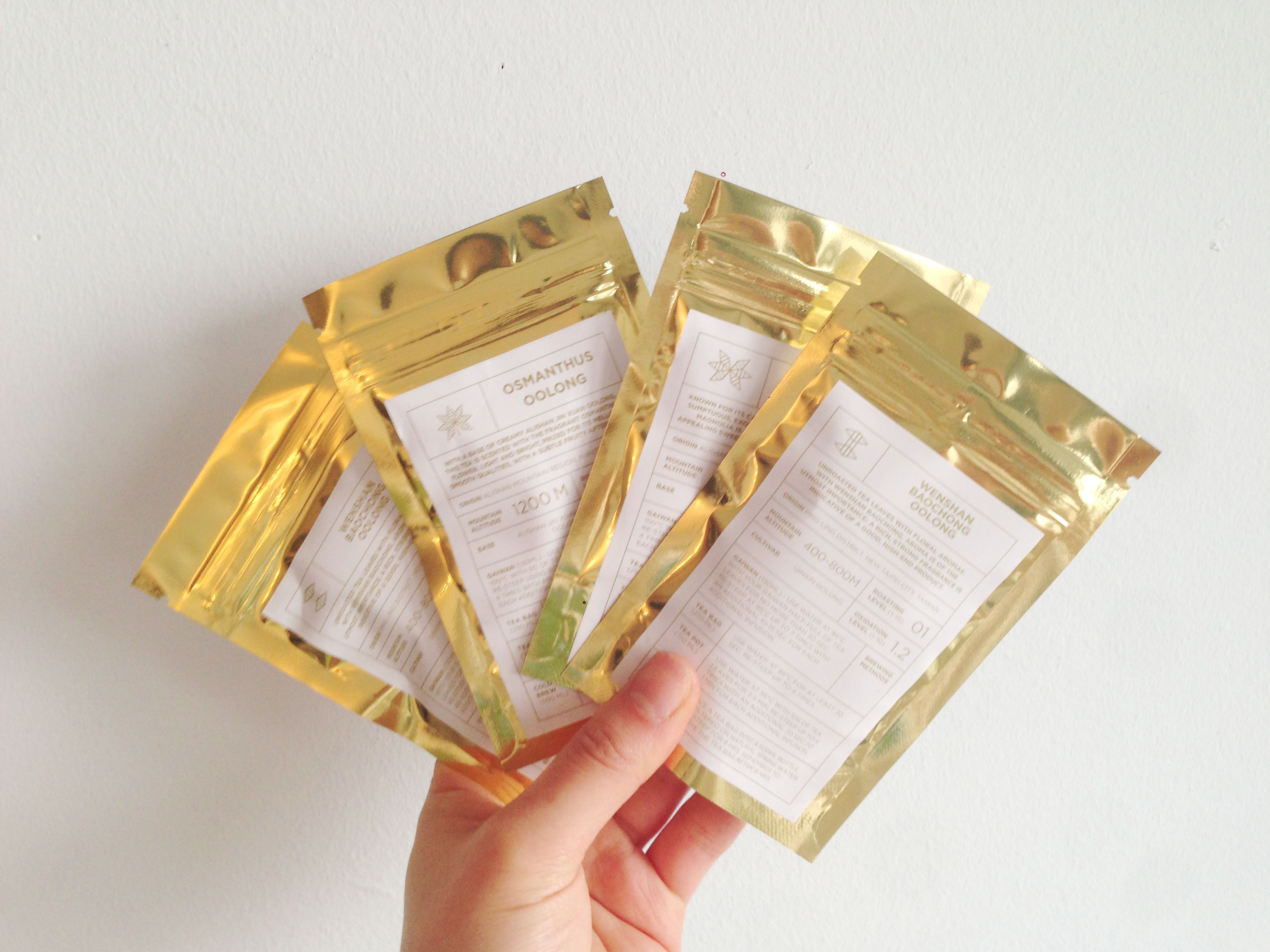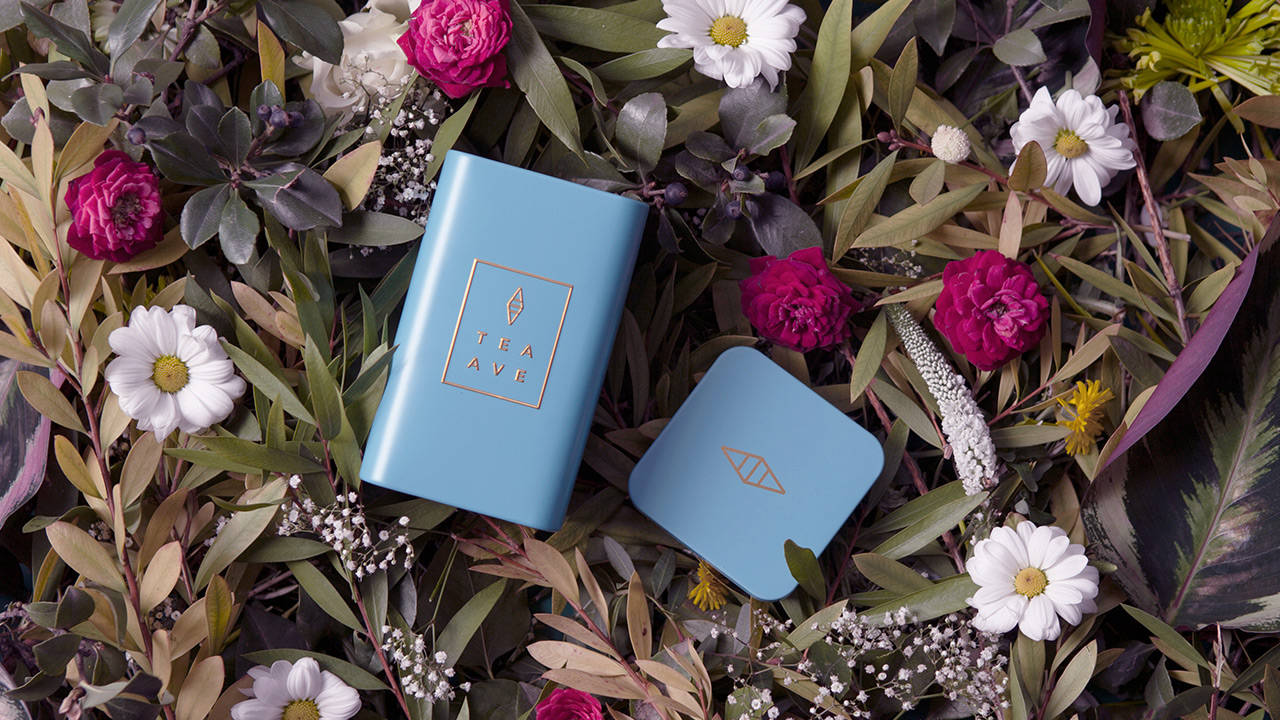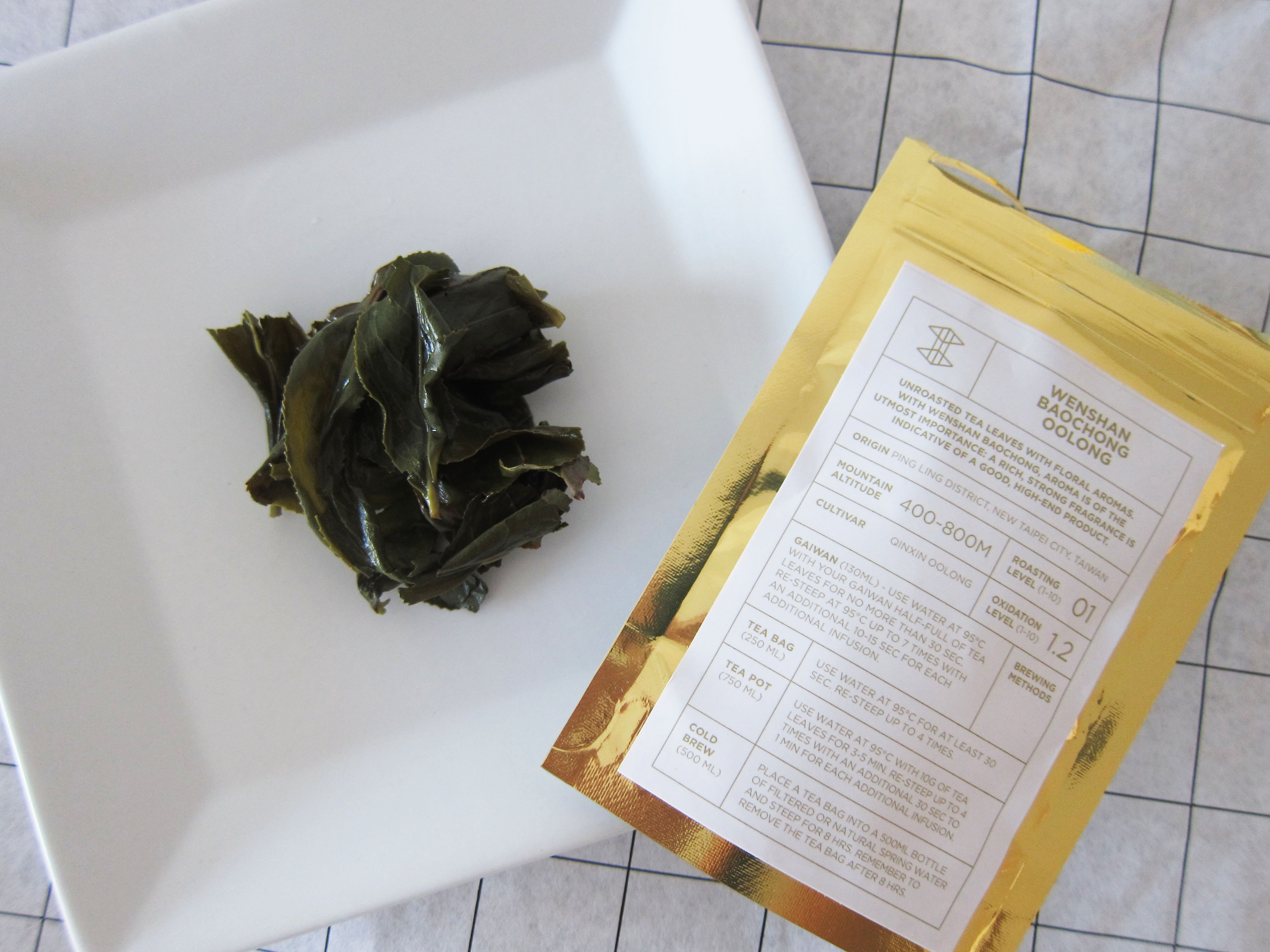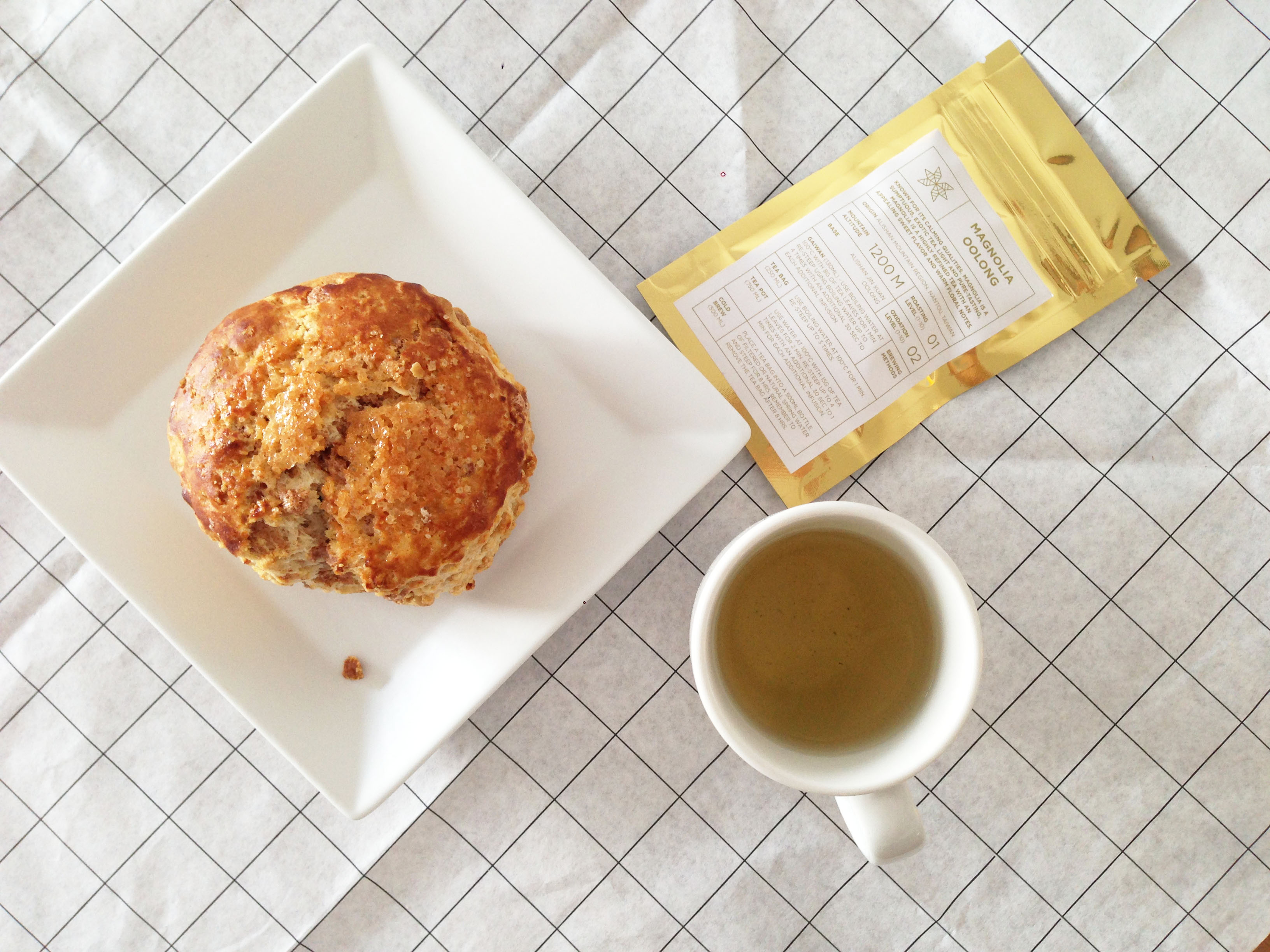Who doesn’t like tea? I’m a heavy tea drinker, and sometimes I prefer tea over coffee. I can’t live without tea for more than two days! It has become my daily essential. Moreover, tea culture is an important part of the culture in Taiwan, especially a variety of green teas.
I was so happy to receive some samples from Tea Ave, which is an online tea shop based in Vancouver (BC, Canada), specializing in oolong sourced from Taiwan. The founders, Jeff and Heidi, are brother and sister who put their professional skills together to promote/spread the love for oolong tea. (Don’t you think working with siblings are just one of the best things that could ever happen?)
 I have received 3 types of oolong: Wenshan Baochong Oolong, Magnolia Oolong, Osmanthus Oolong. Even though I had and loved oolong, but I didn’t know there were so many types of oolong. Tea Ave offers both straight oolongs, and scented oolongs with no artificial flavorings.
I have received 3 types of oolong: Wenshan Baochong Oolong, Magnolia Oolong, Osmanthus Oolong. Even though I had and loved oolong, but I didn’t know there were so many types of oolong. Tea Ave offers both straight oolongs, and scented oolongs with no artificial flavorings.
Oolong comes from the plant Camellia sinensis. It is a partially oxidized tea, which is air dried under the sun then shaped and roasted. The tastes of oolong can vary greatly in character depending on the harvesting region, from light and floral to rich and creamy and nutty.
Wenshan Baochong Oolong: The origin of this is from the Ping Ling District in New Taipei City, Taiwan. The tea leaves are unfrosted, and with a subtle floral taste. The tea is good for several infusions, and the flavor changes each time. First infusion is always flavorful and strong. The second infusion brought the floral flavor, and the is smoother.
Magnolia Oolong: This type of oolong is sourced from Alishan Mountain in Nantou, Taiwan. Alishan mountain is one of the mountains in Taiwan that is known for harvesting teas. I think the aroma for this one is a big stronger than Wenshan Baochong oolong. The has a natural sweet flavor. It has a floral-sweet aftertaste, which I found it perfect when pairing with a pastry for afternoon tea at home!
Osmanthus Oolong: This type of oolong is also sourced from Alishan Mountain. It is more of a creamy based oolong, with a slightly nutty aftertaste, compared to the previous ones. After few infusions, it became a bit fruity, which I’ve never tasted from oolong before. As the fruity taste reminds me of summer, I tried the cold brew method, and it tasted just as good as brew with hot water! It didn’t have an astringent tastes since cold brew requires to steep for 8 hours.
Furthermore, I love the packagings! Not to mention that the teal/turquoise/tiffany blue and white are my favorite colors, the modern, sleek look and the minimal geometric logo made it looks good in the cabinet. It also reflects Tea Ave’s values: clear, authentic, and flavorful oolong.
Each packing also had a clear indication of the origin, mountain altitude, roasting level (scale of 1 to 10), base, oxidation level (scale of 1 to 10), and brewing methods (including tea bag, tea pot, and cold brew). It is a perfect guide for people who are new to oolong. It also comes in different packaging depending on size, from bags to tea bags.
As you can see from the previous image, the tea leaves expanded to its original shape after brewing. This is one of the indications for a high quality tea (at least in Taiwan). The tea leaves are meant to be preserved as a whole without damages after the processes of drying, shaping, and roasting. Lastly, after one month of the launch of the website, Tea Ave was nominated by the World Tea Expo for “Best Tea Industry Website”! Therefore, if you want to broaden your knowledge into oolong, Tea Ave is the place to start. 🙂
For more information, please head over to Tea Ave.
Tea Ave sent me the teas to review. Please know that I would only recommend the products that I truly like/love after trying it myself.






